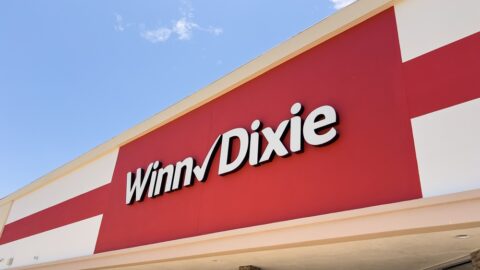Consumer spending on Cyber Monday surpassed initial projections to reach $12.4 billion — both a 9.6% year-over-year increase and the biggest online shopping day of all time, according to Adobe Analytics. Monday’s sales capped off a banner Cyber Week, which saw record spending every day from Thanksgiving through Cyber Monday and brought in a total of $38 billion in sales overall (up 7.8% YoY).
Amazon alone said it sold 1 billion products during its extended promotion period, which kicked off earlier than the traditional Cyber Week start of Thanksgiving Day, on Nov. 17.
A record 200.4 million consumers shopped over the five-day weekend, surpassing last year’s record of 196.7 million, according to the annual survey from the National Retail Federation and Prosper Insights & Analytics. Of those, 121.4 million people visited physical retail locations, in line with the 122.7 million who did so last year. Online shoppers totaled 134.2 million, up from 130.2 million last year.
“The 2023 holiday shopping season began with a lot of uncertainty, as consumers shifted their spending to services, while dealing with rising costs across different facets of their lives,” said Vivek Pandya, Lead Analyst at Adobe Digital Insights in a statement. “The record online spending across Cyber Week, however, shows the impact that discounts can have on consumer demand, especially with quality products that drove a lot of impulse shopping.”
Black Friday Still Most Popular Shopping Day
Black Friday continued its streak as the most popular day for in-store shopping, with 76.2 million consumers opting to visit brick-and-mortar locations, up from 72.9 million in 2022, according to the NRF. Black Friday also was the extended weekend’s most popular day for online shopping, with roughly 90.6 million consumers shopping online, up from 87.2 million in 2022. By comparison, approximately 73 million consumers shopped online on Cyber Monday, down slightly from the 77 million who did so last year.
“The five-day period between Thanksgiving and Cyber Monday represents some of the busiest shopping days of the year and reflects the continued resilience of consumers and strength of the economy,” said NRF President and CEO Matthew Shay in a statement. “Shoppers exceeded our expectations with a robust turnout. Retailers large and small were prepared to deliver safe, convenient and affordable shopping experiences with the products and services consumers needed, and at great prices.”
Consumers surveyed by the NRF reported that, on average, 55% of their Thanksgiving weekend purchases were specifically driven by sales and promotions, up from 52% in 2022. Another 31% said a limited-time sale or promotion convinced them to make a purchase they were hesitant about, up from 29% last year.
“Although sales are strong, consumers are still very budget-conscious with reduced confidence, flexible loyalties and more price consciousness than in the previous holiday cycles,” said Matthew Pavich, Managing Director of Global Strategic Consulting at Revionics in comments shared with Retail TouchPoints. “It will be extra important for retailers to understand the competitive landscape and be able to dynamically react if needed to win the battle on pricing this holiday season.”
The NRF expects the Cyber Week momentum to continue through the holiday season, with total sales from Nov. 1 through Dec. 31 projected to also reach record levels, totaling $957.3 billion to $966.6 billion.
“Although the NRF forecasts a 3-4% increase in spend this year versus last, it’s safe to say that margins in a lot of retail segments will be more squeezed than ever,” added Pavich. “On top of that, retailers have ridden the wave of inflation to grow revenue and will find it more challenging to drive revenue growth with inflation cooling and store traffic still posing a challenge for multiple segments. Coupling these facts with a more aggressive competitive landscape and the rise of discount competition, retailers will need to be savvier than ever to meet the needs of consumers who are still prioritizing pricing and value above all else this holiday season.”
November Expected to Mark BNPL’s Biggest Month Ever
And while the spending levels indicate a more confident, free-spending U.S. consumer, there are also signs of continuing hesitancy. One is the huge increase in purchases financed using buy now, pay later (BNPL) options. Adobe reports that BNPL usage hit an all-time high on Cyber Monday, contributing $940 million in online spend and representing a staggering 42.5% increase YoY. For the season to date (Nov. 1 to Nov. 27), BNPL usage is up 17% YoY and has driven a total of $8.3 billion in spending — and November 2023 is expected to be the biggest month on record for the payment method.
That prediction is reinforced by the numbers being reported by BNPL operators. Klarna, for example, saw a 29.5% increase in orders placed by U.S. shoppers on its platform on Black Friday this year compared to 2022.













